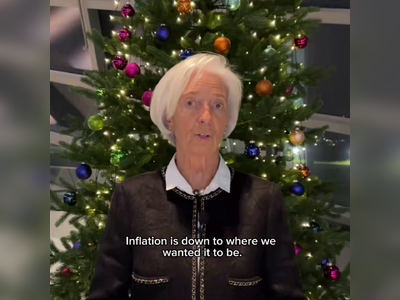Global Economic Outlook: Major Economies Face Diverse Challenges
Economic conditions vary across major global economies amid inflation concerns, interest rate adjustments, and geopolitical tensions.
The global economic landscape is characterized by significant disparities among major economies as they navigate persistent inflation, shifting monetary policies, and the impacts of geopolitical conflicts.
Recent data indicates that inflation rates, although stabilizing in certain regions, continue to exert pressure on household budgets and business costs.
In the United States, inflation remains a central concern, with the Consumer Price Index showing a year-over-year increase of 3.7% as of September 2023. In response, the Federal Reserve has implemented a series of interest rate hikes, raising the benchmark rate to a range of 5.25% to 5.50%.
Market analysts anticipate that further adjustments may occur before the end of the year, contingent upon inflation trends and labor market conditions.
Conversely, in the Eurozone, inflation has shown signs of moderation, with the latest figures reporting an average rate of 5.2%.
The European Central Bank (ECB) has likewise increased interest rates significantly, targeting inflation towards its goal of around 2%.
Economic growth predictions for the Eurozone are cautious, with projections estimating a modest growth of 0.4% in 2024, reflecting challenges such as energy prices and industrial production fluctuations.
In Asia, China’s economy is facing hurdles, with GDP growth projected at 4.6% for 2023, significantly lower than the earlier government targets.
Factors including a sluggish property market, declining exports, and rising youth unemployment have contributed to a cautious economic outlook.
The People's Bank of China has responded by reducing interest rates to stimulate growth, highlighting the ongoing efforts to revive consumer confidence and spending.
Emerging markets generally reflect varied growth trajectories.
In India, robust economic expansion is forecasted at 6.5% for the upcoming fiscal year, fueled by domestic consumption and strong manufacturing output.
However, inflationary pressures continue to challenge policymakers as they strive to maintain balance.
Geopolitical tensions, particularly regarding the conflict in Ukraine and U.S.-China relations, have introduced additional uncertainties into global trade dynamics.
Sanctions imposed on Russia have disrupted energy markets and agricultural supply chains, contributing to fluctuating prices worldwide.
In parallel, shifts in U.S.-China relations have raised concerns over trade policies and their implications for global supply chains.
Labor markets across many advanced economies remain tight, with low unemployment rates bolstering consumer spending, although wage growth has not fully kept pace with inflation.
The International Monetary Fund (IMF) has called for a coordinated approach to address these multifaceted economic challenges while promoting sustainable growth.
Public sentiment regarding economic conditions is varied and often fleeting, influenced by immediate financial pressures and longer-term outlooks.
Fiscal policies implemented by governments are being scrutinized as they navigate between stimulating growth and controlling inflation.
As 2023 progresses, the interplay of these global economic factors continues to evolve, shaping the landscape of international financial markets.
Recent data indicates that inflation rates, although stabilizing in certain regions, continue to exert pressure on household budgets and business costs.
In the United States, inflation remains a central concern, with the Consumer Price Index showing a year-over-year increase of 3.7% as of September 2023. In response, the Federal Reserve has implemented a series of interest rate hikes, raising the benchmark rate to a range of 5.25% to 5.50%.
Market analysts anticipate that further adjustments may occur before the end of the year, contingent upon inflation trends and labor market conditions.
Conversely, in the Eurozone, inflation has shown signs of moderation, with the latest figures reporting an average rate of 5.2%.
The European Central Bank (ECB) has likewise increased interest rates significantly, targeting inflation towards its goal of around 2%.
Economic growth predictions for the Eurozone are cautious, with projections estimating a modest growth of 0.4% in 2024, reflecting challenges such as energy prices and industrial production fluctuations.
In Asia, China’s economy is facing hurdles, with GDP growth projected at 4.6% for 2023, significantly lower than the earlier government targets.
Factors including a sluggish property market, declining exports, and rising youth unemployment have contributed to a cautious economic outlook.
The People's Bank of China has responded by reducing interest rates to stimulate growth, highlighting the ongoing efforts to revive consumer confidence and spending.
Emerging markets generally reflect varied growth trajectories.
In India, robust economic expansion is forecasted at 6.5% for the upcoming fiscal year, fueled by domestic consumption and strong manufacturing output.
However, inflationary pressures continue to challenge policymakers as they strive to maintain balance.
Geopolitical tensions, particularly regarding the conflict in Ukraine and U.S.-China relations, have introduced additional uncertainties into global trade dynamics.
Sanctions imposed on Russia have disrupted energy markets and agricultural supply chains, contributing to fluctuating prices worldwide.
In parallel, shifts in U.S.-China relations have raised concerns over trade policies and their implications for global supply chains.
Labor markets across many advanced economies remain tight, with low unemployment rates bolstering consumer spending, although wage growth has not fully kept pace with inflation.
The International Monetary Fund (IMF) has called for a coordinated approach to address these multifaceted economic challenges while promoting sustainable growth.
Public sentiment regarding economic conditions is varied and often fleeting, influenced by immediate financial pressures and longer-term outlooks.
Fiscal policies implemented by governments are being scrutinized as they navigate between stimulating growth and controlling inflation.
As 2023 progresses, the interplay of these global economic factors continues to evolve, shaping the landscape of international financial markets.











